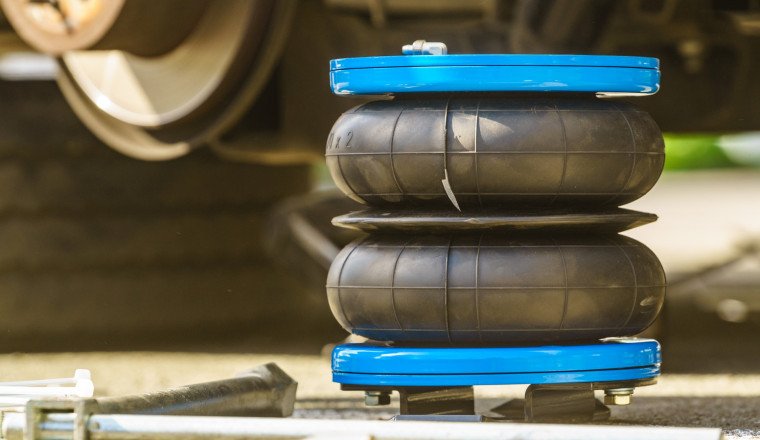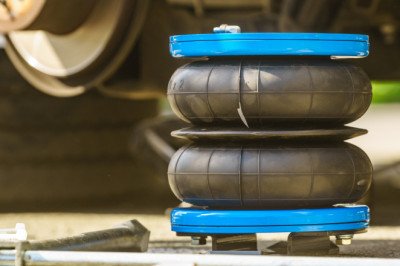
Most vehicles you see on the road are either going to be rocking coil springs or good old-fashioned leaf springs. These suspension systems perform perfectly fine for most people in typical driving situations, keeping the average day's ride comfortable across paved roads. The technology involved is pretty straightforward, too — when the car hits a bump, a big spring swallows the blow, and a shock absorber prevents the cabin from bouncing.
There are, however, some more elaborate suspension solutions out there. Maybe you want the last word in comfort, or maybe you want something that can adjust on the fly between soft, stiff, and heavy load. Perhaps you're looking to get low enough to scrape the ground, or high enough to tower over your no-longer peers, or bump back and forth as you choose. For all of these needs, your answer might just be air.
However, an air-based component can come in two forms, air shocks and air bags (the latter is often called air suspension). So what exactly are the differences between them, and how do they work?
In traditional suspension systems, the spring (like a coil or leaf) and the damper are two separate components. Air shocks simply ask, why not be both? An air shock is a shock absorber which contains a gas bag and hydraulic fluid inside of it. The gas, usually nitrogen, can be pumped in or out, inflating or deflating the system as necessary. The more inflated, the stiffer the suspension will be, and the reverse if deflated. Pumped out gas will be stored in an air tank until it's ready to be put back in. Depending on how it's set up, a computer can handle the task of maintaining the correct pressure, or the driver can manually change it at will.
Conceptually, this is somewhat like the hydropneumatic suspension system developed by Citroen, except it's the air that's getting adjusted and stored in a tank, not the liquid. Air shocks are also relatively compact compared to the bulky hydropneumatic contraption. The basic idea is that when you hit a bump, the air squishes itself against the liquid, which cannot compress. The resulting pressure spike restabilizes the car, and since the computer can keep adjusting the exact amount of pressure moment to moment, that makes for an incredibly smooth ride and a cabin that will always stay level.
Of course, if you're a maniac, it can make for ultra-stiff suspension when you're hurling yourself around a corner. The true beauty of variable pressure is that it allows for a wide range of use cases.
 Anetlanda/Shutterstock
Anetlanda/Shutterstock
Not to be confused with the crash-safety feature, air bags or air suspension similarly work by pumping gas in and out of a bag to maintain pressure, although in this case there's no liquid they're bumping up against. The major difference from air shocks is that in this system, the bag is external to the shock absorber, which is itself a separate mechanism. In that sense, air bags are an alternative to coil or leaf springs, not a two-in-one solution also acting as a shock absorber.
They work by having a computer-controlled compressor inflate and deflate the bags as needed to maintain the desired pressure, which in turn gives the ride the softness, or stiffness, desired. Usually there's an air tank to store or release gas for quick, moment to moment changes in pressure. Since each bag can be pumped separately, maintaining a level ride height under all circumstances is one of the system's calling cards.
Essentially, this means the cabin is bouncing up and down on a rubber ball over each wheel. The result is a nearly peerless ride comfort, often considered the smoothest in the world. That's why the likes of Rolls-Royce, Bentley, Mercedes, Audi, and many others include air suspension as standard on their highest-end luxury models. Air bags can of course be swapped in to almost any car and tuned more for performance if you often find yourself driving sideways.
















Facebook Conversations